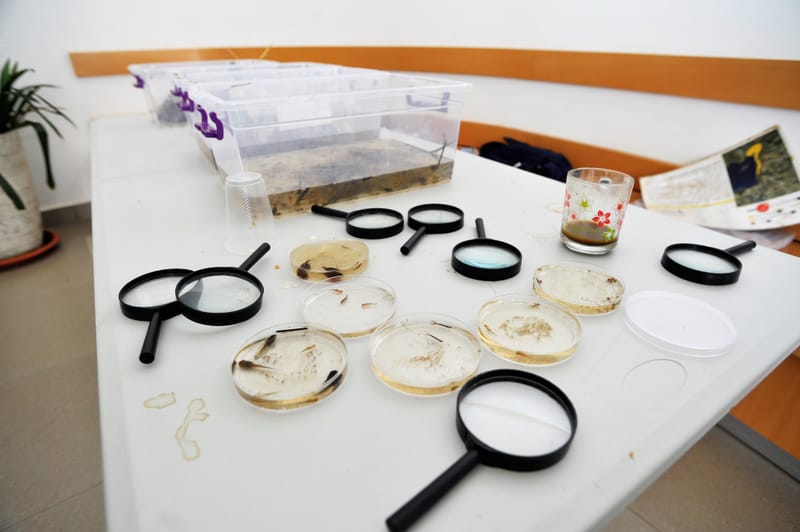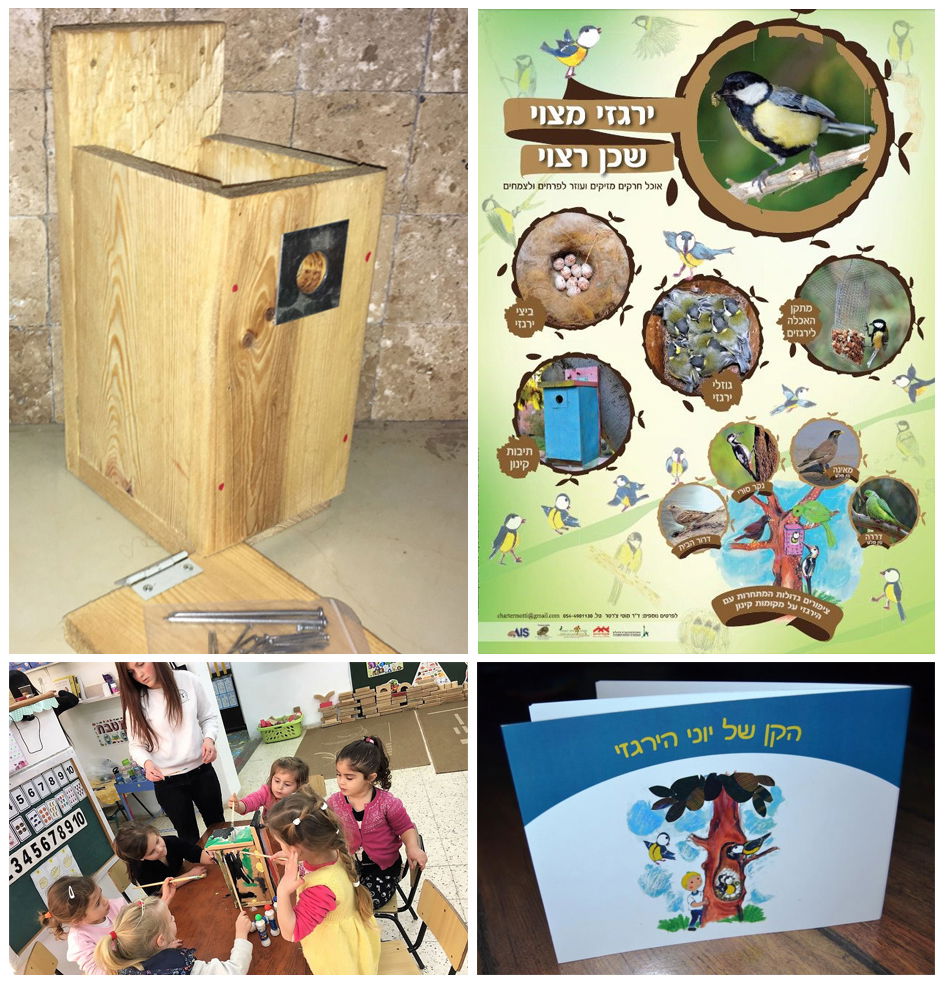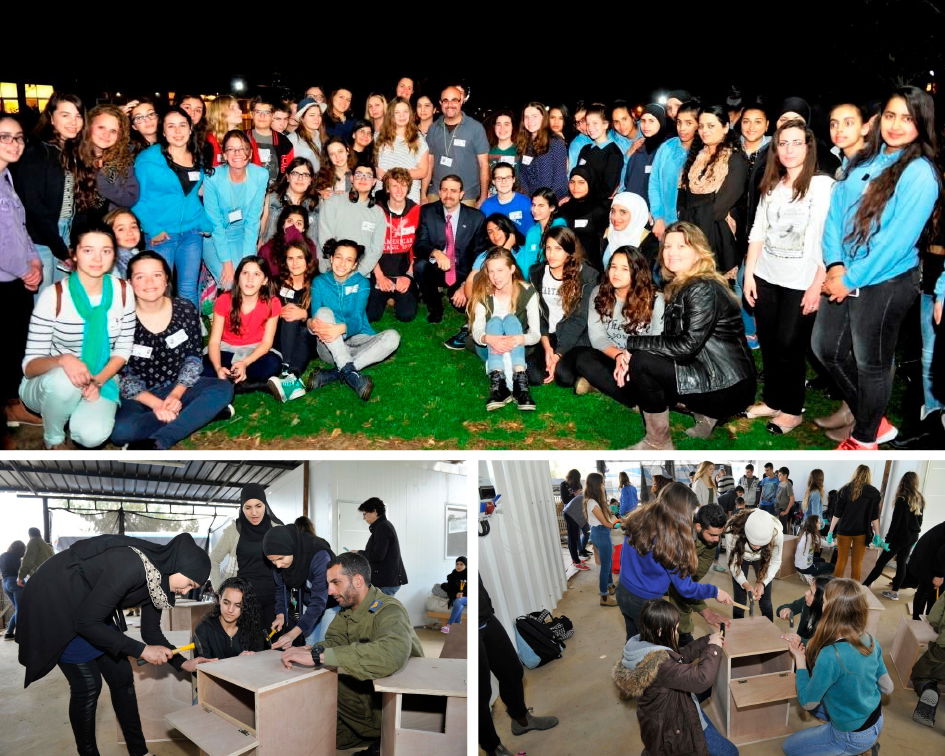Bringing wildlife to the children through education

For good and for bad, global communications have radically changed the world and children grow up much faster than ever before. They have access to vast amounts of information at a very young age and are made aware of many bleak environmental situations such as global warming and mass extinctions. Education itself has changed as well, and along with the common use of technology in the classroom, teachers still realize the value of providing children with authentic experiences with the real world, especially nature. Progressive educators know that children need to be exposed to hopeful solutions to serious problems in order to grow into more responsible, optimistic adults, rather than simply dealing with the negative side of things.
Unfortunately, the Israeli educational system is still somewhat behind-the-times in that learning and grades are mostly based on exams rather than more creative forms of assessment and involvement in hands-on learning. Another obstacle is lack of budget in Israeli schools for special activities which makes it impossible for them to purchase nest boxes.
In our project, we place a very strong emphasis on education. We go from school to school and enable children in kindergartens all the way to up to high-school teens to be involved in building, painting and monitoring nest boxes they adopt. It gives them a great sense of pride to “know” the great tit, house sparrow and/or hoopoe families living in their box, and this can be done by giving them a report about how many nestlings have hatched and showing them photographs of the parents and their funny-looking little ones.
Children take special delight in the odd appearance of nestlings when they are small and how they grow into beautiful adults with intricately-patterned different color plumage.

Project "Yoni the great tit (Parus major)"
During 2011-2013 a study led by Dr. Motti Charter with colleagues found that the great tit are threatened locally because larger invasive species (Common Myna and Ring-necked Parakeets) expel the smaller tits from nest cavities. The solution to the problem is easy, by adding small nest boxes with entrances that prevent the larger invasive species from entering. In order to spread the world Dr. Charter wrote a children book based on the scientific paper that tells the story of “Yoni” the great tit that was having trouble to breed because every time he finds a cavity a larger species expels it. In the end children saw that Yoni was sad and build him a nest boxes that Yoni later breed in.
After reading the book, the children then build a nest box with their teacher in order to help the great tits around their kindergarten or school. We also made an educational poster.

Great tits (Parus major) are very common song birds that breed in cavities throughout Israel. Great tits are extremely beneficial birds to have around homes and urban areas because they prey on many insect pests and are excellent biological pest control agents of local garden pests. During the last decade, an invasive alien species called the common myna populations have increased, thereby decreasing the number of potential cavities available for the smaller great tits and predating the tits’ nests (eggs and nestlings). There is a simple solution for saving the tit population, by providing them nest boxes with an entrance that only they can enter. Since most Israeli kindergartens have very limited budgets, only the well-off ones can afford to add a nest boxes and therefore learn about the birds around their kindergartens.
Here we would like to provide underprivileged kindergartens kits comprised of a nest box, a children's book, and educational booklet that will provide the kindergarten teachers the knowledge to study the birds with the children. We believe that children in kindergarten are at the perfect age to start to experience hand-on projects. We will use birds and the nest boxes as a tool to learn about our surroundings while also actually providing needed conservation measures for the birds.
By adding nest box in kindergartens and school, children learn that they can make real change to our environment (not only negative like we typically tell ourselves!). It is amazing to observe children in the class, and then go with outside and see how they react. The same child that cannot sit in his seat for more than a minute may be the most well behaved child while building the nest boxes, and studying topics on the birds.
The change in behavior is simple, he is interested.

Great tits and house sparrows are the two most common bird species that use nest boxes in our kindergartens and schools
Project, “Girls using CSI approach to study barn owls in STEAM study in Israel and USA”
The main goal of this US Embassy of Israel funded project is to move girl high school students closer to STEM (Science, Technology, Engineering, and Math) fields through scientific studies built around barn owl STEM studies in Israel and USA. We introduce girls to middle and high school students to STEM research from academics professionals. The unique connection between science, barn owls (nature) and girls is a perfect fit to use alternative research tools and actively involved science in and out of the classroom. This program promotes STEM education among girls in general, and from underrepresented communities in Israel’s socio-economic and geographic periphery.

